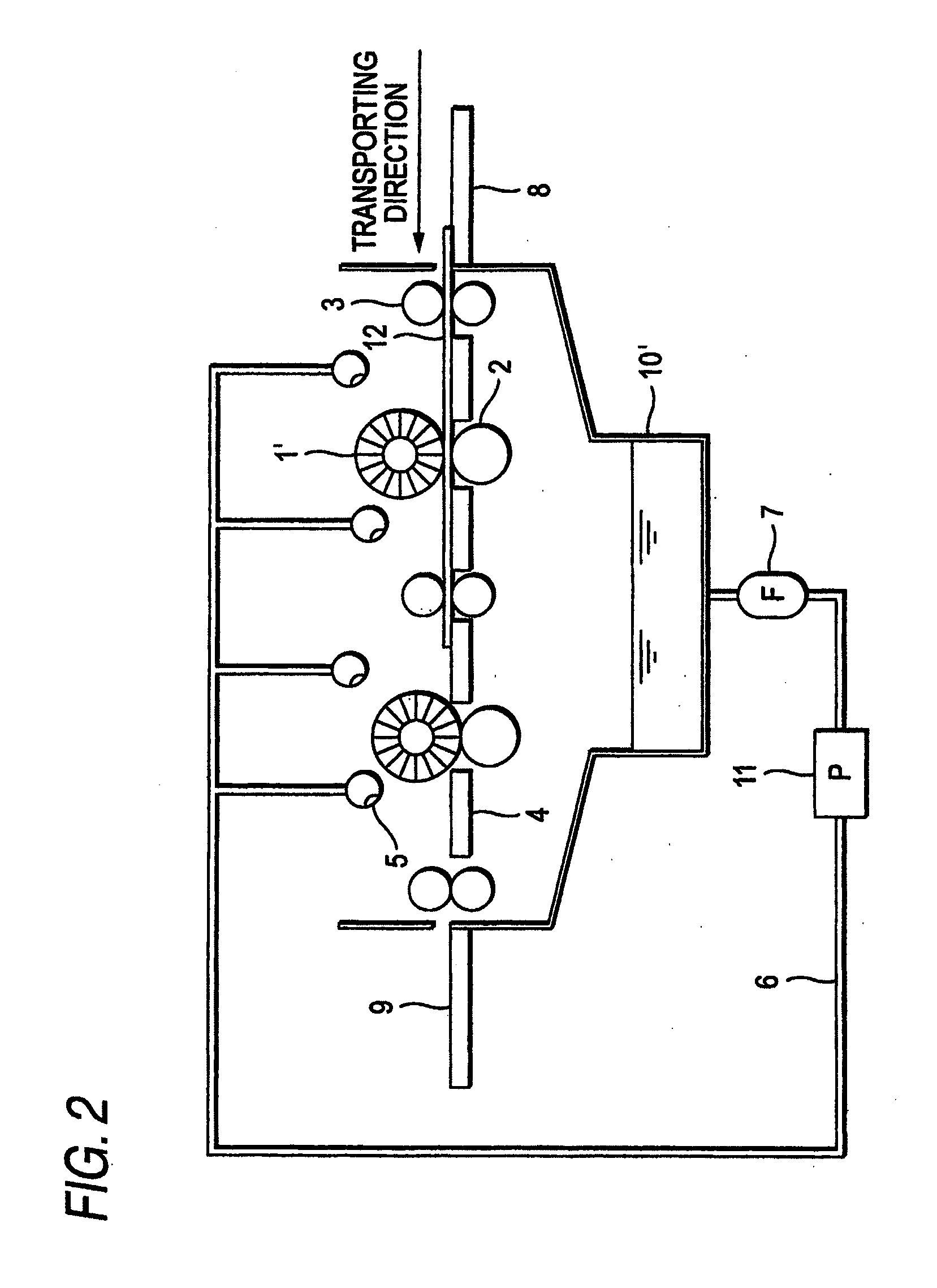Plate-making method of lithographic printing plate precursor
a lithographic printing plate and precursor technology, applied in the field of plate-making methods using lithographic printing plate precursors, can solve the problems of low sensitivity or press life, ink staining, generation of ink staining, etc., and achieve good inking property and press life. good
- Summary
- Abstract
- Description
- Claims
- Application Information
AI Technical Summary
Benefits of technology
Problems solved by technology
Method used
Image
Examples
examples
[0380]The present invention is described in greater detail below by referring to the Examples, but the present invention should not be construed as being limited thereto.
(1) Production of Support (1)
[0381]A 0.3 mm-thick aluminum plate (material: JIS A 1050) was subjected to a degrease treatment with an aqueous 10 mass % sodium aluminate solution at 50° C. for 30 seconds so as to remove rolling oil on the surface thereof. Subsequently, the aluminum plate surface was grained using three nylon brushes implanted with bundled bristles having a diameter of 0.3 mm and an aqueous suspension (specific gravity: 1.1 g / cm3) of pumice having a median diameter of 25 μm and then thoroughly washed with water. This plate was etched by dipping it in an aqueous 25 mass % sodium hydroxide solution at 45° C. for 9 seconds and after washing with water, dipped in 20 mass % nitric acid at 60° C. for 20 seconds, followed by water washing. At this time, the etching amount of the grained surface was about 3 g...
examples 30 to 33
[0422]The exposed printing plate precursor obtained was subjected to a plate-making treatment of processing the plate in an automatic developing apparatus shown in FIG. 2 and then drying it by a drier. In Examples 30 and 32, a single unit of this automatic developing apparatus was used, and in Examples 31 and 33, two units were connected and used. The developer used is shown in Table 1 below.
[0423]Reattachment of the removed non-image part component, initial inking and press life in the plate-making process above were evaluated in the following manner. The evaluation results are shown in Table 1.
(1) Reattachment of Removed Non-Image Part Component
[0424]The surface of the lithographic printing plate after the development processing above was observed with an eye and to what extent the removed non-image part component of the image forming layer reattached was evaluated according to the following indices.
[0425]A: Absolutely no reattachment of removed component and very good.
[0426]B: Re...
PUM
| Property | Measurement | Unit |
|---|---|---|
| pH | aaaaa | aaaaa |
| wavelength | aaaaa | aaaaa |
| pH | aaaaa | aaaaa |
Abstract
Description
Claims
Application Information
 Login to View More
Login to View More - R&D
- Intellectual Property
- Life Sciences
- Materials
- Tech Scout
- Unparalleled Data Quality
- Higher Quality Content
- 60% Fewer Hallucinations
Browse by: Latest US Patents, China's latest patents, Technical Efficacy Thesaurus, Application Domain, Technology Topic, Popular Technical Reports.
© 2025 PatSnap. All rights reserved.Legal|Privacy policy|Modern Slavery Act Transparency Statement|Sitemap|About US| Contact US: help@patsnap.com



